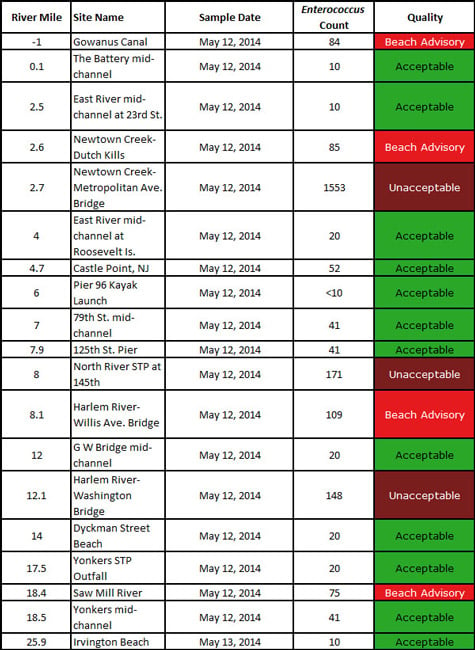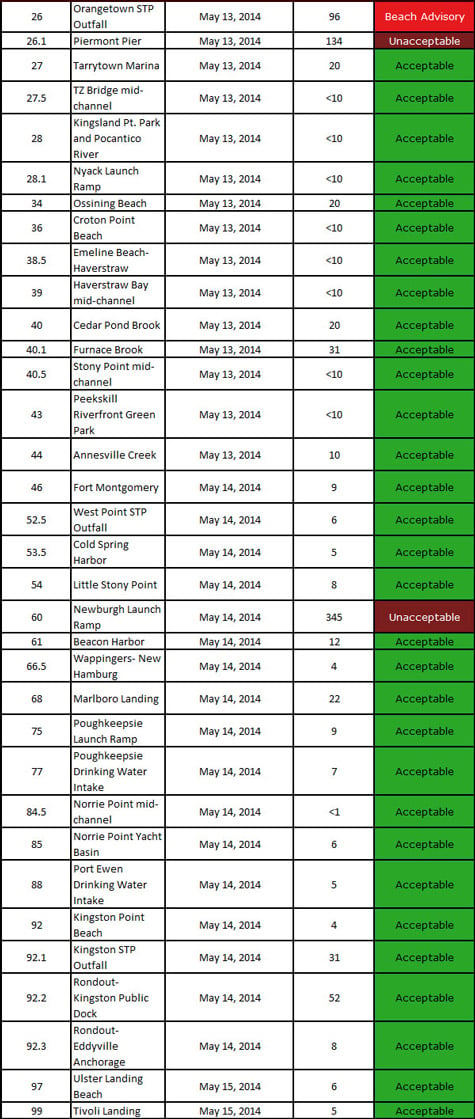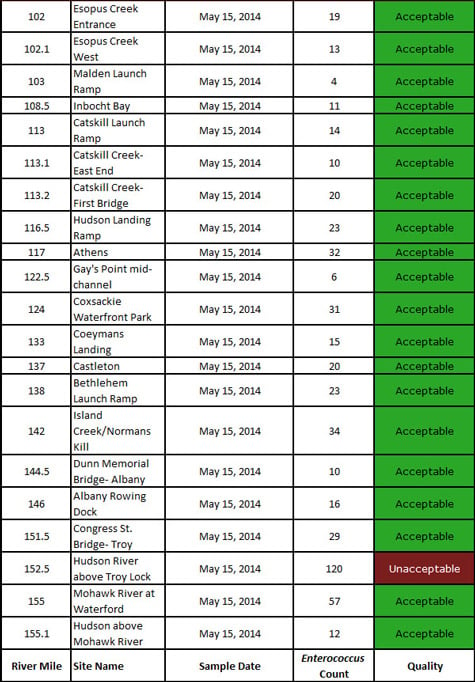Hudson Water Quality Report: See the Data From Our May River Patrol
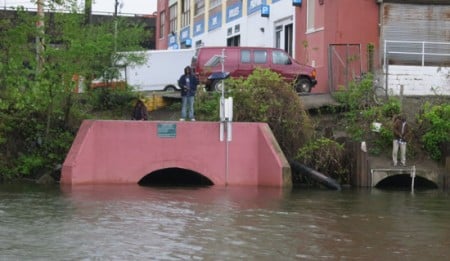
Fishing over the “Big C” – the largest Combined Sewage Overflow (CSO) in the Capital District – it rained hard one hour before I took this photo.
View more images on our Flickr site

Fishing over the “Big C” – the largest Combined Sewage Overflow (CSO) in the Capital District – it rained hard one hour before I took this photo.
The data from Riverkeeper’s first Hudson River sampling run of 2014 is in, and almost all the sites we sampled from May 12-15 passed Environmental Protection Agency guidelines for safe swimming.
In New York City, Newtown Creek, the Gowanus Canal and the Harlem River were among the sites to fail, demonstrating the lingering effects of less than a half-inch of rain two days prior to our sampling on May 12. Here, the disproportionately large volume of raw and partially treated sewage discharged along with stormwater has a more lasting effect. Elsewhere the waters around the city are such a fantastic mixing machine that the pollution discharged during the rain event two days prior was diluted before we arrived with the Fletcher and our sample bottles. Unfortunately, what we’re seeing on the Newtown and Gowanus is what we have come to expect.
As we motored north from New York City over the course of four days, the effect of that rain was muted. North of New York City, with five exceptions, the water we sampled met the EPA’s guidelines for safe swimming. Two notable exceptions were the Newburgh boat launch ramp and our sample site upstream of the Troy lock. Both sites have a high failure rate, whether or not there’s been rain. At the Troy site, 62% of our samples over the years have failed, and at the Newburgh launch ramp, 58% — suggesting both have local sources of contamination. Both clearly call for further investigation.
Throughout the estuary the water was filled with boats and the shoreline with anglers trying to land striped bass. In Newburgh, where a record 60-pound striped bass was caught on May 14 by Orange County resident Eric Lester, many of the boats on the water would have been launched from the ramp where our sample the same day showed compromised water quality. Elsewhere, the low fecal contamination we measured showed that a river safe for swimming is achievable. To attain it we’ll have to keep eliminating sources of fecal contamination. Most, as we see from this largely dry weather sampling run, are related to rain events and wet weather.
![]()
We finished the sampling run in four days, instead of six, thanks to added help this year from Carol Knudson from Columbia University’s Lamont Doherty Earth Observatory and Brian Brigham of CUNY Queens College, the two institutions that serve as our science partners on the project. (We used the stolen days to launch our first ever patrol of the Mohawk River, the Hudson’s largest tributary.) This year, we’ve added methane, DNA, carbon dioxide and optical brighteners to our cadre of tests. Each has the potential to tell us something new and important about the river, and how we can clean it up. We’ll fill you in on the results as we learn.
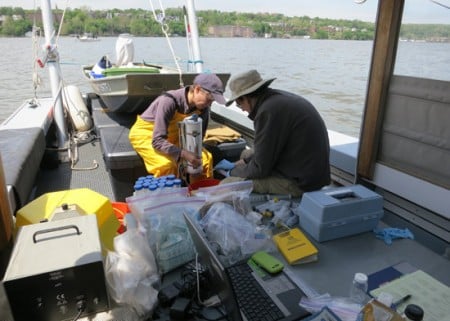
For now, we’re in the midst of gathering our first set of samples for the six tributaries in our study, thanks to the help of dozens of citizen scientists. Stay tuned.
